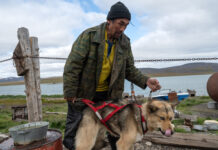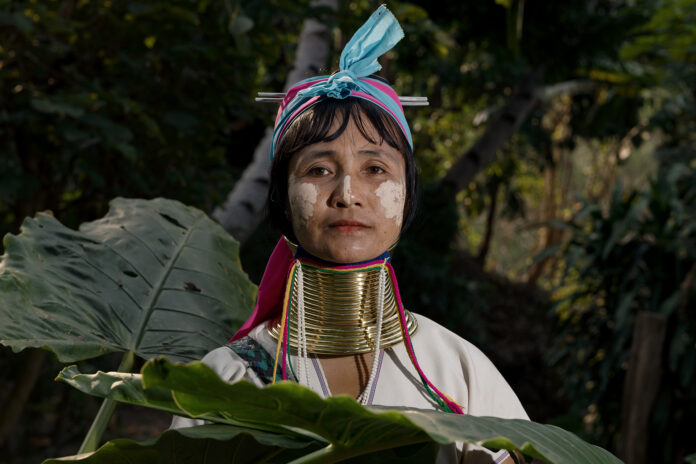
Text and Images by Guillaume Petermann
The Kayan village of Thailand is a minority group of Myanmar (Burma), donning brass spirals around their necks for decades. It is these necklaces that have made famous the women of the Kayan ethnic group, better known as the “Long Neck Women”. With the pandemic crippling the tourism industry, Kayan women are resorting to casual labour for income.
“Long Neck Tribe Villages Tours”. These few words written on the tourist agencies operating during the COVID-19 pandemic set the tone for my arrival in Mae Hong Son, northwest Thailand. They run through my head during the 30-minutes drive through the lush Thai countryside and towards the village of Huai Pu Kaeng near the Burmese border – a village famous for the Kayan women, better known as the “Long Neck Women”, for the brass spiral necklaces elongating their necks.

As you get out of the vehicle on what looks like a car park where a few motorbikes are parked, you might wonder what there is to see around here apart from the Pai River meandering between sandy banks. However, on the other side, a man with long black hair adjusts his longyi – the traditional Burmese loincloth – and turns on the engine of his long-tail boat to come toward me. After a brief exchange limited to “Long Neck Village” and his finger pointing to the other side of the riverbank, he invites me to sit down to cross the river, which, as indicated in the tourist brochures, acts as a natural frontier between the familiar and the exotic, the normality and the strangeness, the known and the unusual.
As I step off the boat, another man, also dressed in the traditional Burmese unisex skirt, comes to me with a notebook with the words “entrance fee, 250 bahts”. After paying the fee, he steps aside and I can see the entrance of the village where it is written in big letters: “Kayan Long Neck Village”.
Originally from Myanmar, which they had to flee to escape civil war and repression in the 80s–90s, the Kayan, also known as Padaung, first arrived in Thailand as refugees. At the time, Thai tourism was booming, and the local authorities quickly saw the lucrative profits that could be made from these long-necked women in their colourful dresses. The Kayan were then settled in villages specially created for them. These newly built villages became known as “long neck villages”, and Huai Pu Kaeng was the first of these, established in 1984.
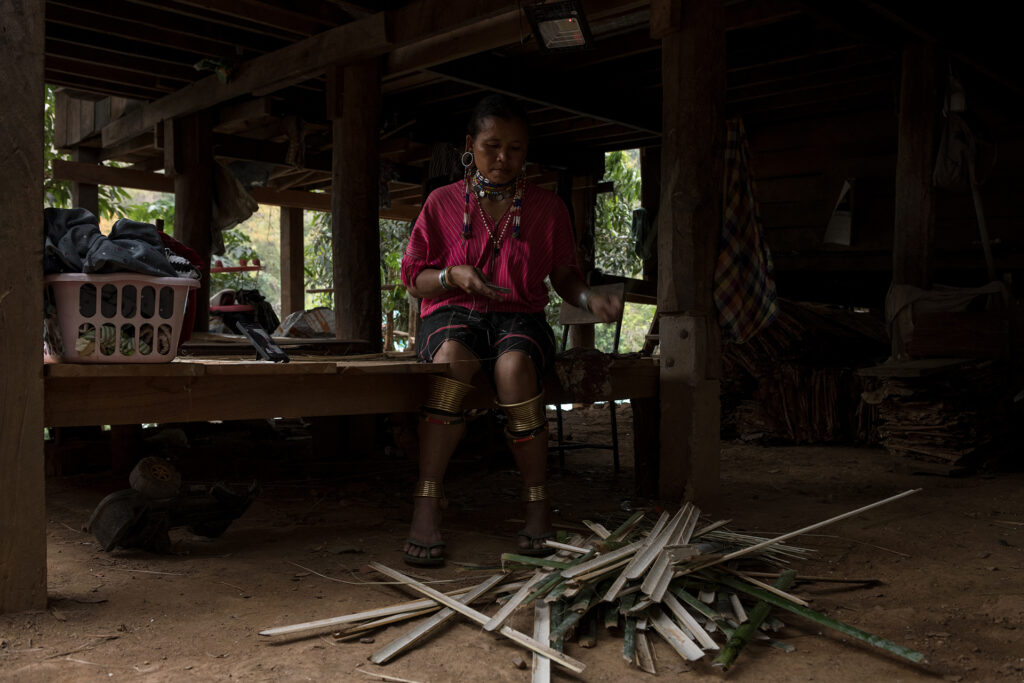
Since then, the images of the Kayan women and the metal ornaments around their necks have been seen around the world and have become icons of northern Thailand tourism.
For this reason, many organisations, including the UNHCR, have urged tourists to stop visiting these villages, describing them as “ethnic theme parks” or “human zoos” in which Kayan people with their necks bound in brass rings are presented as human tourist attractions.
But unlike the other Kayan villages, Huai Pu Kaeng is the only one based on a “community” model with a fairer distribution of profits and more balanced exchanges between the local population and tourists eager for the picturesque. Here, all profits from the sale of handicrafts and entrance fees go directly to the 250 inhabitants of the village community.
However, it is true that because of tourist enthusiasm for the Long Neck Women over the last decade, many other so-called “ethnic” villages were built close to Chiang Mai, Chiang Rai, and Pattaya. Pure tourist attraction created from scratch by businessmen, its inhabitants were paid to live there and exhibit themselves to the tourists, and earned a salary in proportion to the number of monthly visitors.
Today, with the collapse of tourism due to the pandemic, these villages are closing down one after the other, leaving many Kayan women and families without a roof over their heads, forced to return to the refugee camps, or even to their country of origin, which they had fled decades ago.
Nevertheless, when they were prosperous, these tourist hotspots generated substantial and regular income for the Kayan communities who live there. Women could earn up to USD200 per month, which enabled them to support their families and communities.
For these refugees or children of refugees, most of whom experienced the dark days of the Burmese junta, their lives, based on the picturesque appearance to attract tourists, have always seemed to be evil for a good.
Mu Tae, 36, turns her elongated neck ringed with a dozen of brass spirals that reflect the sun, pulls her surgical mask down, spits a red juice onto the ground before offering a wide and reddish smile with her mouth full of betel nut, the stimulating and slightly euphoric nut that is widely consumed in Myanmar, and says: “We have built our life here in Huai Pu Kaeng. This country, this village, and this house are my home now! Many of us still have family in Myanmar or the refugee camps scattered along the border. We know too well how difficult life is there. I don’t think anyone in the village would be willing to go back to Myanmar, where the same scenes of violence that we fled from are happening again, especially in our home region of Kayah state.”
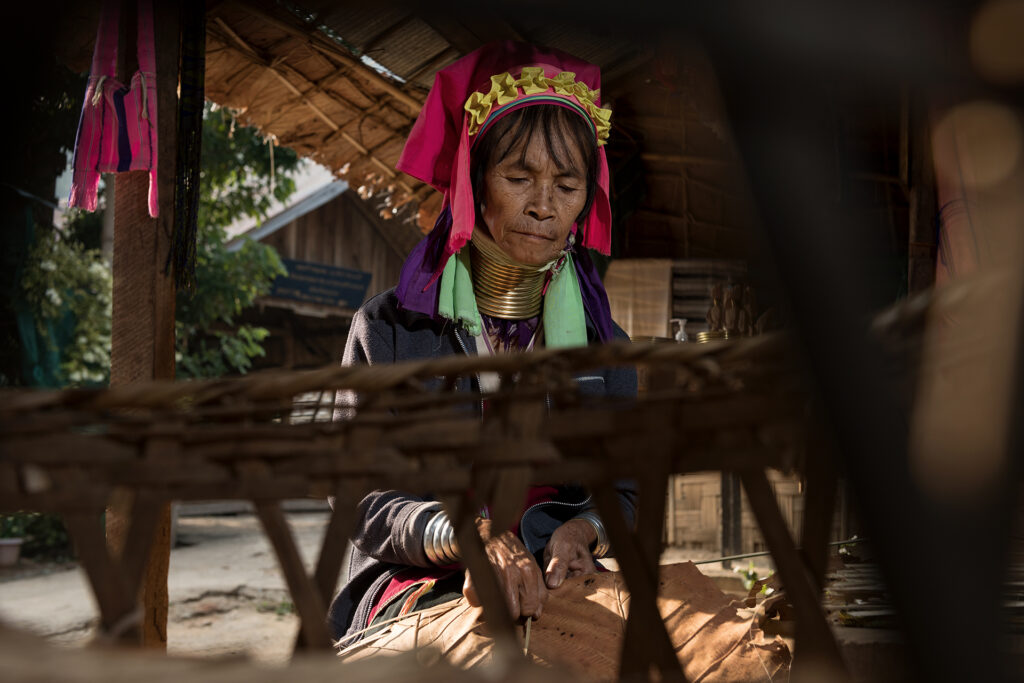
Before the COVID-19 pandemic, up to 250 tourists a day could walk down the only paved street of Huai Pu Kaeng. At that time, everyone in the village was busy making sure that their storefront was as attractive as possible to visitors. While some were weaving traditional Kayan scarves or shirts, others were playing the guitar. While the women were posing for a souvenir photo, the men were making local handicrafts, inviting anyone who wished to participate. The economy of the village was based on the tourism industry and the metal ornaments around the necks of its women.
However, today, when arriving in Huai Pu Kaeng, the first impression after a few steps on the village’s single paved street was emptiness. At certain moments of the day, the village that was described to me as a tourist hotspot in the region looks more like a ghost town.
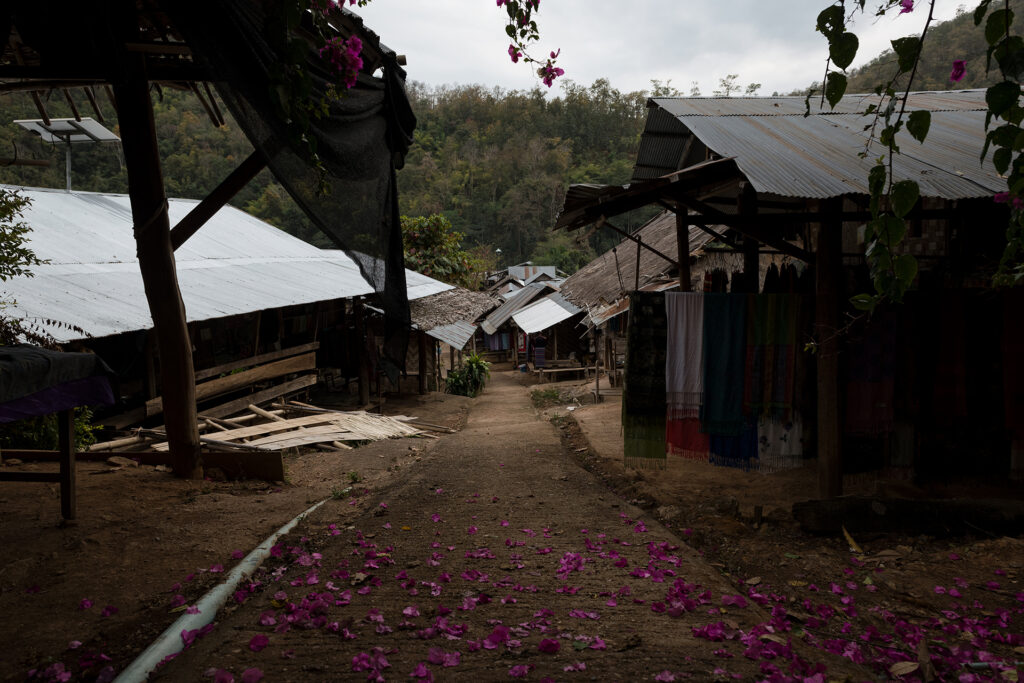
Since the beginning of the pandemic, the number of tourists in the village has plummeted. Restrictions have been put in place in Thailand to reduce the spread of the virus and ultimately, reduced the flow of tourists to a mere trickle. In the small street lined with wooden and bamboo huts, often built on stilts, the stalls displaying trinkets, bracelets, bottle openers, and other statuettes representing the Long Neck Women are getting dusty.
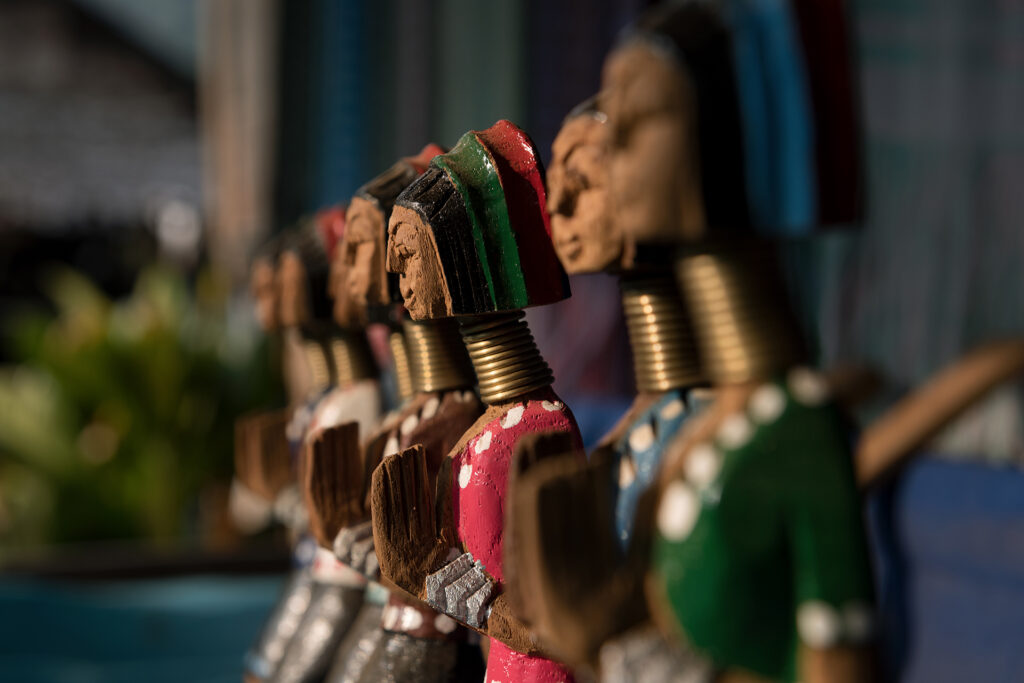
The village of Huai Pu Kaeng is roughly composed of the main street surrounded by shopfronts decorated with countless photos and souvenirs representing its emblematic inhabitants. At the entrance is a grocery shop, and at the end, the school. A little way from the village, an imposing church stands in the middle of the lush vegetation. The church building is evidence of the various waves of Catholic evangelisation in the Kayan homeland over the last century. Although the size of the building would suggest that the entire village community is Catholic, there are many beliefs in the village: Buddhism, Protestantism, Animism, or a bit of everything at the same time and in varying degrees. A hundred metres away, there are a few pig enclosures and a few scattered fields where sesame, corn, pumpkins, white beans, bananas, and papayas are grown.
Bordered by the river and the forest, the village of Huay Pu Keng appears as a territorial unit enclosed by natural barriers. Despite the massive flow of visitors for many years, its inhabitants have always lived in relative isolation.
Since the beginning of the pandemic, while most of the men went to work in the surrounding villages as farmers, those who have stayed, when they are not fishing, hunting or collecting wood, spend their days chewing betel nuts. Most women have been forced to return to the fields. What used to be an activity to produce an economic supplement has now become a necessity. After years of being seated in front of their doors and posing for photos, the forced return to agricultural activities is not easy, especially for the Long Neck Women.
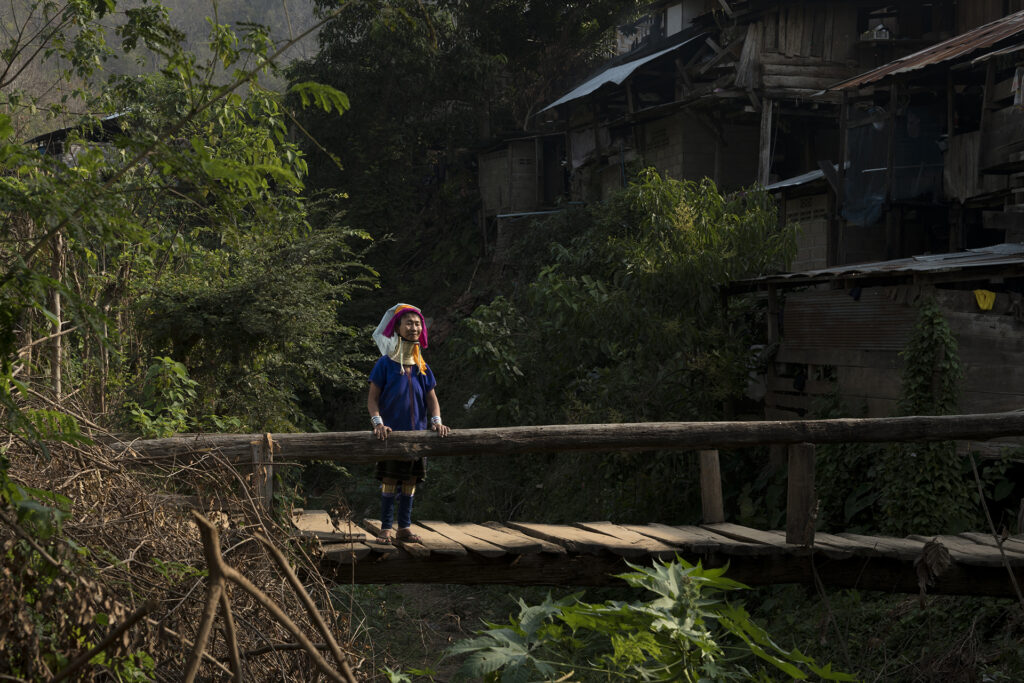
“At my age, I can’t go back to work in the fields, my body is tired and it’s way too difficult for me. Even if it doesn’t bring me much money, I prefer to weave the Tong Tueng (teak leaves) so that my son can sell them in the surrounding villages. Moreover, by sitting here, I am sure to not miss a visitor who might be passing through the village,” says Mu La, 58, with a cheeky smile as she adjusts the mesh under her collar to avoid burns.
When they are not working in the fields, the women of the village, their faces are often covered in Tanaka, a plant that leaves a white make-up and acts as sun protection, go fishing for shells in the river or collect different leaves, herbs, and plants in the surrounding forest. They also have to take care of the children and grandchildren, as well as all the daily work and household tasks. Today, as in the past, they are the ones who carry the community at arm’s length.
[ess_grid settings='{“entry-skin”:”1″,”layout-sizing”:”boxed”,”grid-layout”:”even”,”spacings”:”0″,”rows-unlimited”:”off”,”columns”:”3″,”rows”:”1″,”grid-animation”:”fade”,”use-spinner”:”0″}’ layers='{“custom-image”:{“00″:”38818″,”01″:”38821″,”02″:”38819″},”custom-type”:{“00″:”image”,”01″:”image”,”02″:”image”},”use-skin”:{“00″:”-1″,”01″:”-1″,”02″:”-1″}}’][/ess_grid]
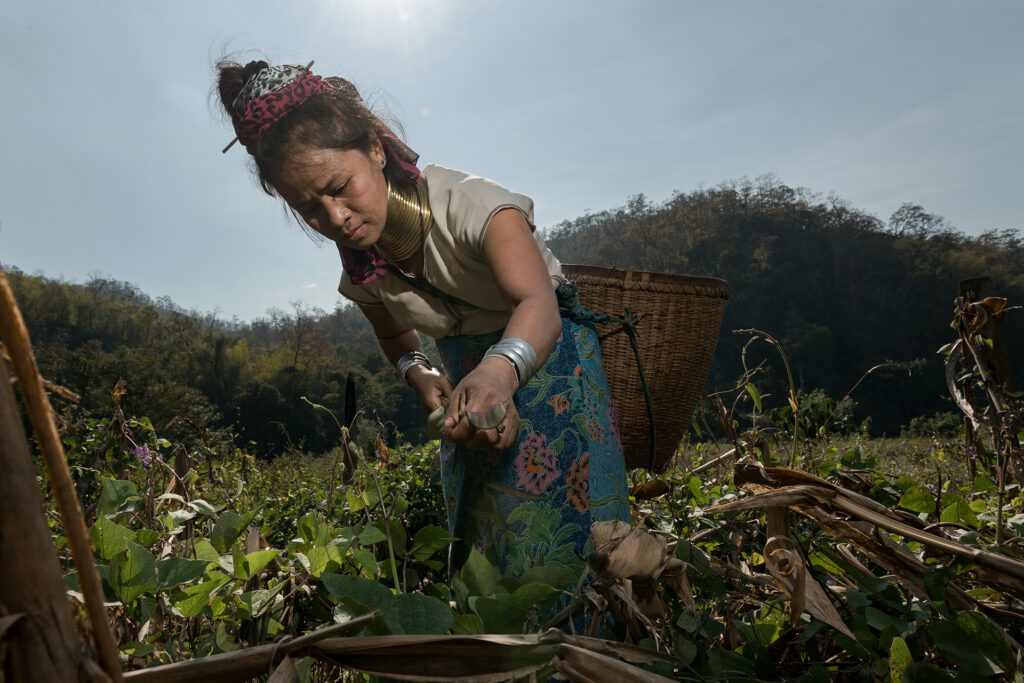
For young Kayan, most of them preferred to leave the village to work in cities. Many had already made this choice long before the Coronavirus outbreak. Although many Kayan had no official documents to leave their village for years, many have now received full Thai citizenship or I.D. cards that allow them to move and work freely within the country. The same is true about the necklaces that made the Kayan famous. Many young women had already withdrawn them long before the pandemic, as they were considered too constricting and, above all, too differentiating among the Thai population.
Today, only 11 out of the 110 women in Huay Pu Keng still wear brass spiral necklaces. In addition, the continuous passage of tourists also added a certain attractiveness to Western life. The majority of the young Kayans already felt that their village lifestyle and culture were from another age. In their minds, the future looked brighter outside the village, away from the stigma of the Kayan culture. A feeling that has been reinforced by the Thai B-movie and the TikTok videos that they consume with appetite.
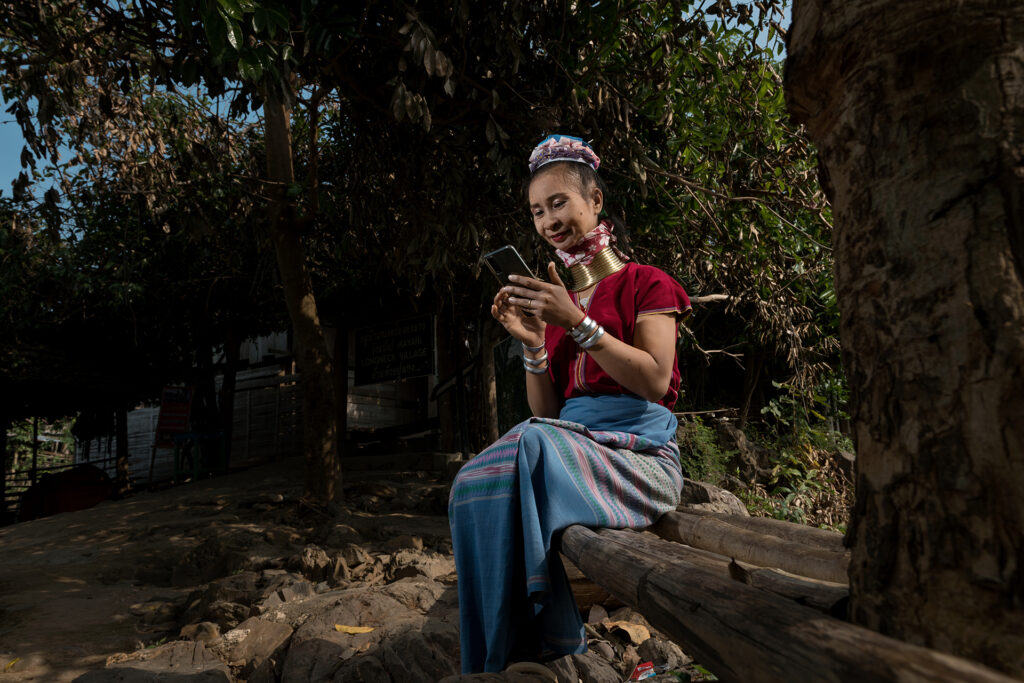
It is not clear why the Kayan started wearing these necklaces. Thai tourist guides claim, pushing folklore to its extreme, that the metal rings were used to protect them from tiger bites that jumped on their necks. Kayan women simply say that they are a distinctive sign of beauty as well as a sign of cultural belonging. Moreover, contrary to popular belief, the necklaces do not elongate the neck but press on the chest and collarbones, giving the illusion of a long neck.
“It’s not pretty without the necklaces,” says Mu La, 58, who wears about 20 rings around her neck and several around her legs, “but I’m well aware that for us, the older ones, we wear them out of tradition, while the younger girls only wore them for tourism.
“I don’t see why I should wear this collar. It is very painful and uncomfortable. It takes a long time to get used to it. In the beginning, even the simplest movements are made difficult by the collar: sleeping, eating, moving around, not to mention bathing! I used to help my family by wearing it. It was an income generator. Now that there are no more tourists, I have decided to take it off permanently. Besides, I want to work in the city like my brothers, and I don’t want to be seen as different.” says 22-year-old Christina, who removed her 15 rings two years ago, before adding, “I want to become a nurse and I know very well that I won’t be able to work in the city with the necklace around my neck.”
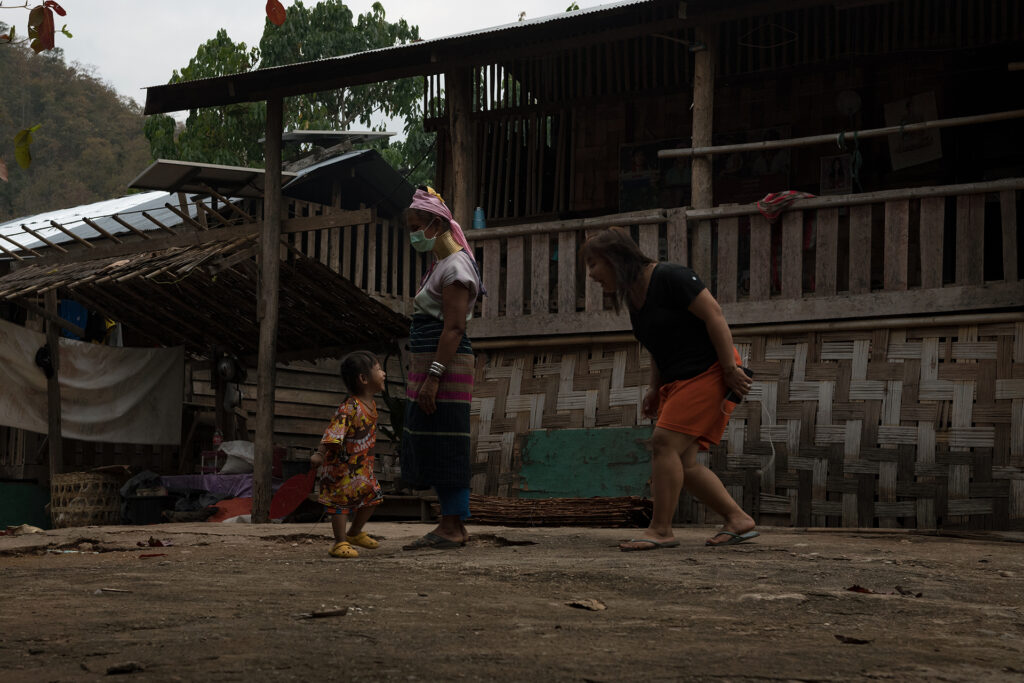
Yet in Huai Pu Kaeng, the 11 women who still wear the metal spiral necklaces hope to return to their former lives soon. Life in the depths of a time punctuated by tourist activities in which they played their role as an extra for tourists in search of exoticism. A life where money was easy to earn while waiting for tourists. Today, after the first two doses of the Sinopharm vaccine, the third injection of the long-awaited serum from the American firm Pfizer is seen as an opportunity to reopen their village to mass tourism and a return to life as it was before.
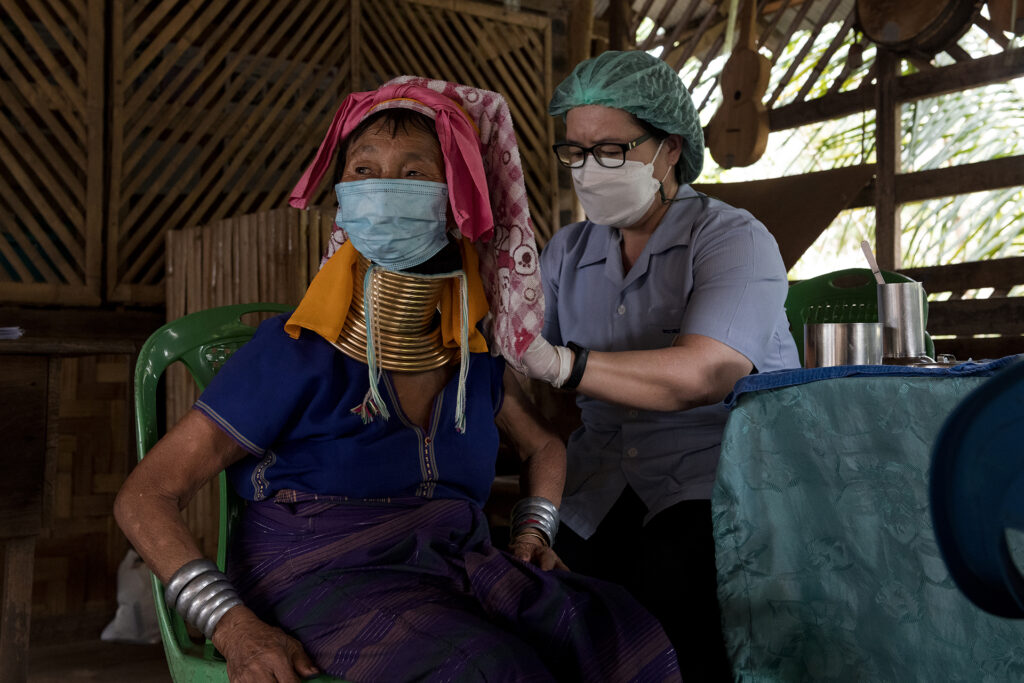
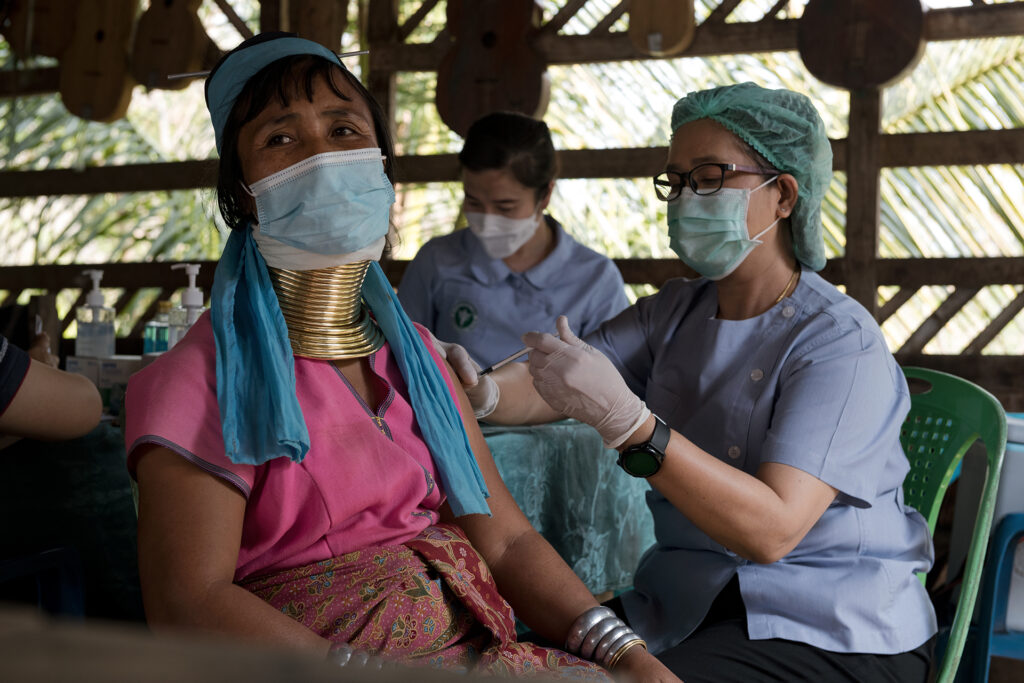
However, the significant losses experienced by the tourism industry in northern Thailand during the COVID-19 pandemic have forced many tour operators to close their doors for good. The pandemic has also brought about a new reality for the Thai authorities, which now aim to stimulate qualitative rather than quantitative demand, targeting higher-income tourists and offering different experiences than in the past.
Although small groups of tourists have been showing up again recently and the Thai kingdom has relaxed its entry restrictions, the golden age of tourism in the village of Huai Pu Kaeng seems to be over. It is probably a necessary step for the Kayan women, who after arriving in Thailand as refugees, and after becoming the flattering stamp of conquering tourism, will have to adapt once again to a new reality.
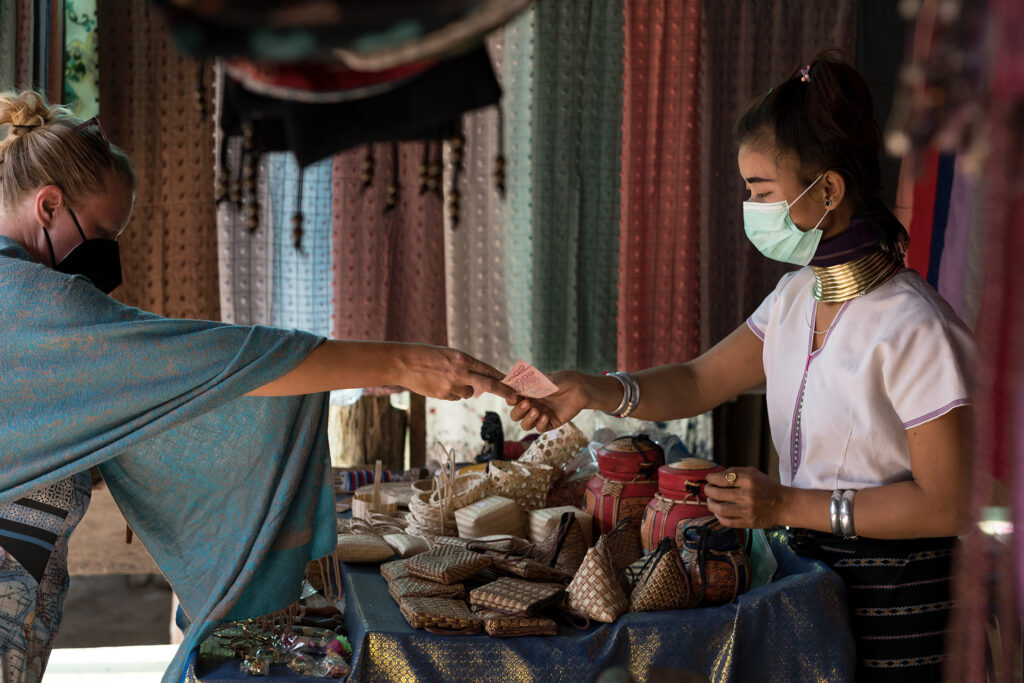
Without visitors for nearly two years, the Kayan world has changed and left them in limbo. May they now find their way into a different future.
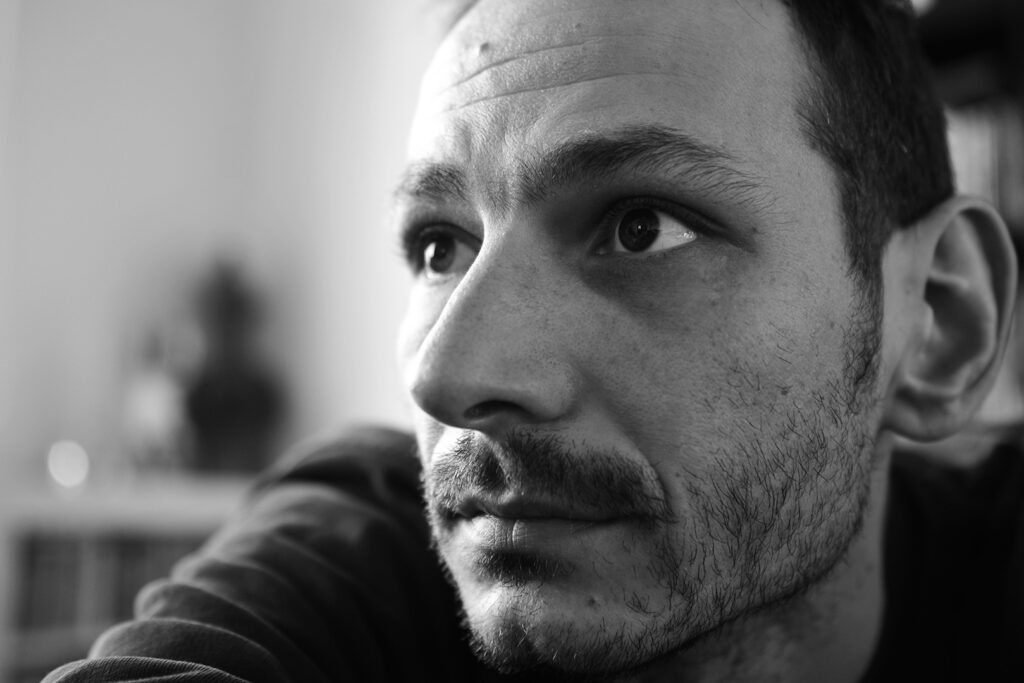 Guillaume Petermann is a French photographer. His work is essentially photojournalism, and covers various subjects including travel, cultural, social, and environmental documentaries. He strives to create images and material that not only show but reveal, that not only display but transfigure! He has worked for various international organisations and his work has appeared in numerous magazines and exhibitions. Do check out Guillaume’s amazing portfolio here. You can also connect with him on Instagram.
Guillaume Petermann is a French photographer. His work is essentially photojournalism, and covers various subjects including travel, cultural, social, and environmental documentaries. He strives to create images and material that not only show but reveal, that not only display but transfigure! He has worked for various international organisations and his work has appeared in numerous magazines and exhibitions. Do check out Guillaume’s amazing portfolio here. You can also connect with him on Instagram.





